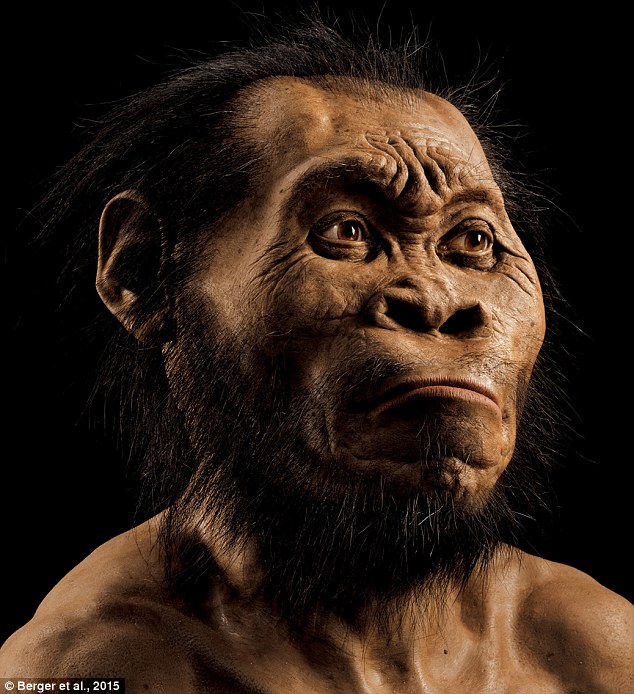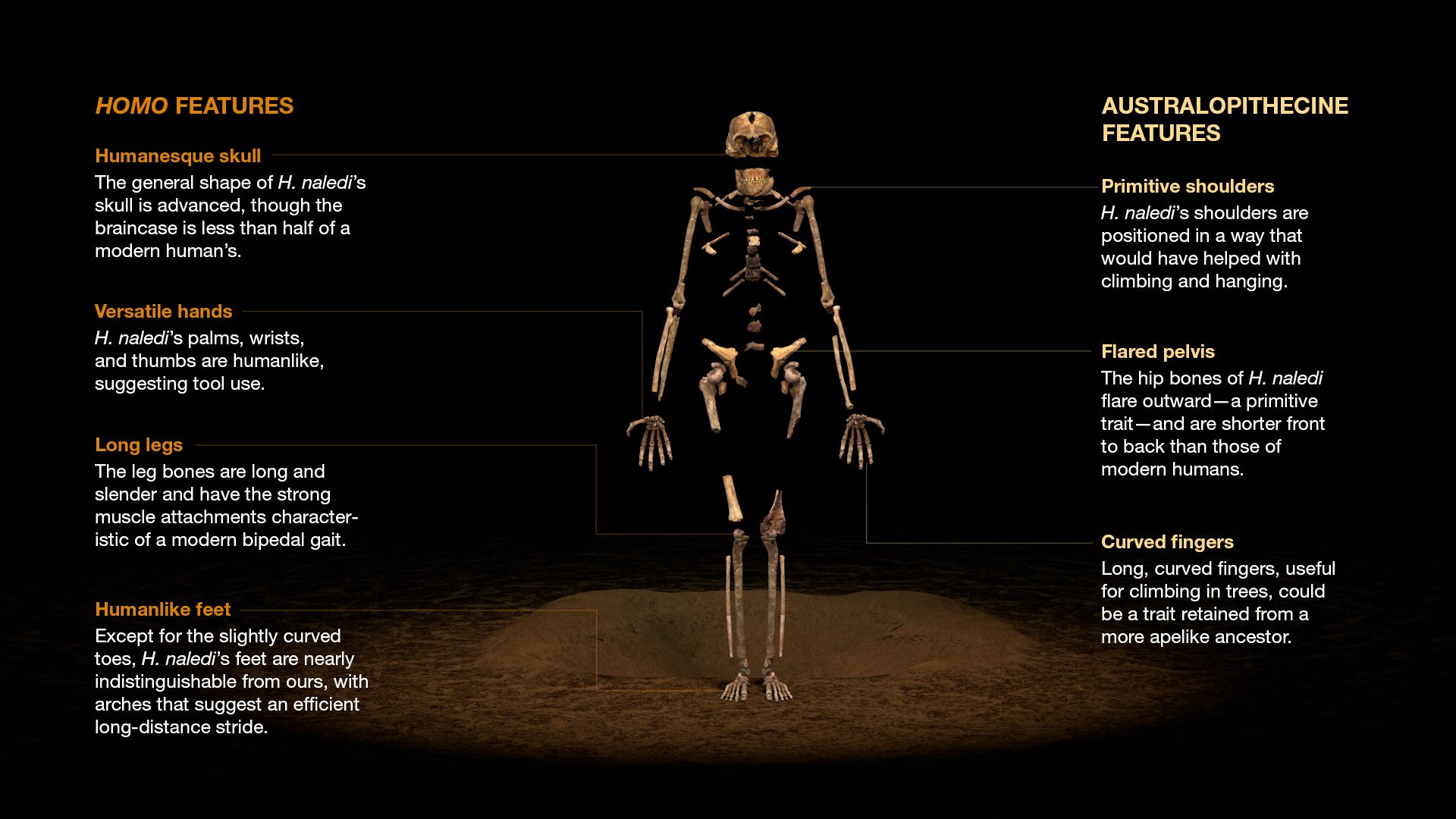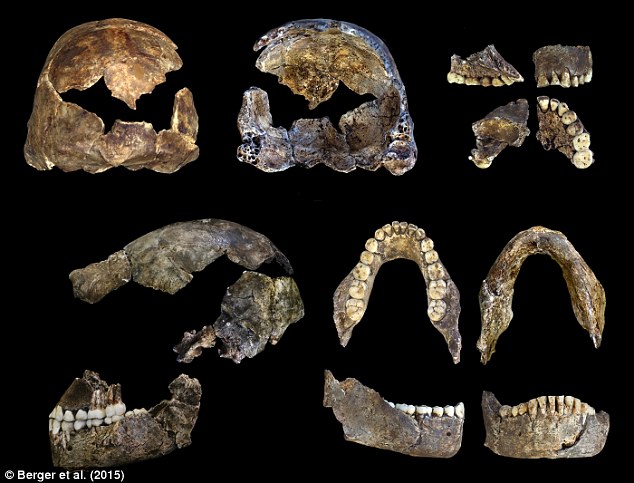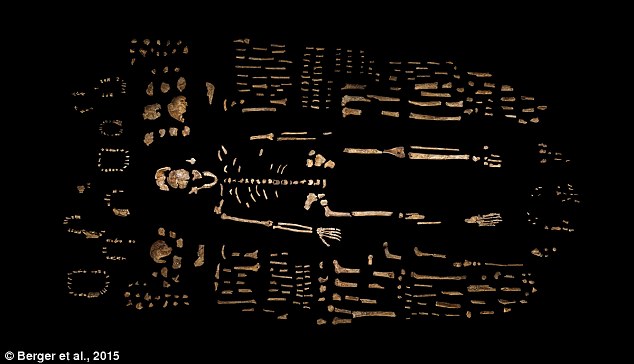
About two years ago, recreational cave explorers Steven Tucker and Rick Hunter, were crawling through the tight crevices of a popular cavern called Rising Star near Johannesburg, when they stumbled upon a hidden chamber. Inside was a plethora of perfectly preserved fossilized bones, many of which looked almost human.
The excited adventurers sent pictures of the find to Lee Berger, an American paleoanthropologist who had been asking caving enthusiasts to look out for fossils. The University of the Witwatersrand researcher who has long suspected that South Africa is a key to some of the missing pieces in the history of human evolution knew Tucker and Hunter had stumbled onto something significant. The only problem? Finding scientists that were small enough to squeeze through the narrow vertical chute that led to the hidden chamber.

So Berger turned to social networking site Facebook for help. He sent out a plea for skinny and preferably small scientists that had caving experience, were not claustrophobic, could function in cramped spaces and most important of all, were willing to work for free! Within a week and a half, he received sixty responses! After interviewing them, the researcher settled on six women that best fit his odd requirements.

Within three weeks, the "underground astronauts" as Berger called them were ready to start. It was no easy task. The trip into the cavern included a journey down a chute nicknamed "Superman's crawl." The narrow passage is so named because the only way to squeeze through is to hold one arm down by your side and the other arm out straight as if flying like Superman.
The next difficult portion was what became referred to as the "dragon's back", a nearly vertical shaft with pointy, jagged rock. Underground astronaut Marina Elliott describes parts of the cave, "like looking into a shark's mouth. There were fingers and tongues and teeth of rock."
The hardest, however, was the 12-meter (39-foot) chute that they the archaeologists had to squeeze through to get to the chamber. It was so narrow that they could not turn their heads or look down.
Since there was no room for safety harnesses or gear the brave women had to depend on their sure footing and lights from their headlamps to guide them through the journey.
But it was worth it! For inside the cave was a treasure trove of thousands of perfectly preserved fossils, just waiting to be discovered. During their three-week-long excavation efforts, the underground astronauts managed to unearth 1,500 artifacts. They represent 15 individuals, both men and women, of various ages. What was intriguing was that while some fossils looked like they could belong to a modern human, others were more primitive. So who were strange individuals?
To help solve the puzzle, Berger recruited a team of 50 experts from 30 countries. Turns out that the bones belonged to a person whose lower body closely resembled that of the modern human. However, its shoulders, hips and fingers were more primitive. The teeth appeared to be a mix of both, suggesting the evolution was still in process. And though their skulls closely resembled that of the modern human, the braincases were tiny, measuring a mere 560 cubic centimeters for males and 465 for females. This is a lot smaller than the Homo erectus brain that measured an average 900 cubic centimeters and well under half the size of the brain of the modern human.

While Berger and his team knew that the fossils were undoubtedly those of a human ancestor, they were different from any other discovered thus far. This led the researchers who unveiled the findings on September 10th to conclude that Homo naledi (named in honor of the cave where the bones were found), is a new species.
But when did Homo naledi inhabit the planet? That is something the experts are still not sure about. While the body structure puts the species close to the origin of the genus Homo, between two million and three million years ago, this has yet to be scientifically verified. That's because, in order to put a definitive date on fossils, researchers need clues. In the case of "Lucy", the oldest potential ancestor for every known hominin species, they had help from volcanic ash layers. In other significant fossil finds, they have found bones of extinct animals alongside. However, in this case, all the cave has to offer is the human-like remains.

The lack of a date is causing some skepticism among experts. University of California at Berkeley's Time White asserts, “From what is presented here, the [fossils] belong to a primitive Homo erectus, a species named in the 1800s." Others say that until the date is confirmed Homo naledi's real value to science is unknown. While Berger's team is scrambling to prove them wrong with the help of experimental methods to help date the fossils, it will take some time before their theory can be confirmed.
Another mystery? How the bones got into this chamber. Berger speculates that it was used as a burial ground by the ancient civilization. However, that would have entailed the hominins carrying the bodies through the dark narrow passages with the help of a rudimentary light torch. Most scientists believe this is too complex a behavior for a creature with a brain that is no larger than a gorilla's. They instead believe that individuals may have all been trapped inside the cave due to a natural catastrophe.

While experts may argue about the details, the one thing everyone agrees on is that this is one of the most astonishing discovery of fossils in over half a century. What's even more exciting is that there are plenty more to be found. That's because the majority of the bones unearthed by the underground astronauts came from one square meter patch of sediment of the large chamber!
Resources: nationalgeographic.com,dailymail.co.uk,BBC.co.uk